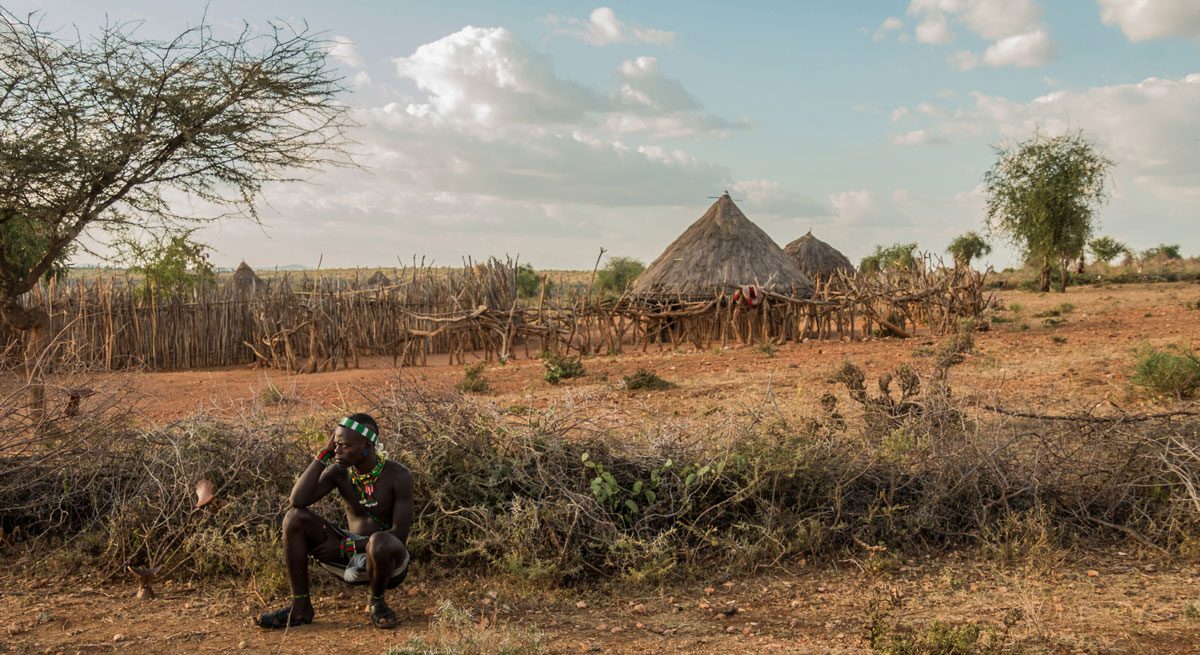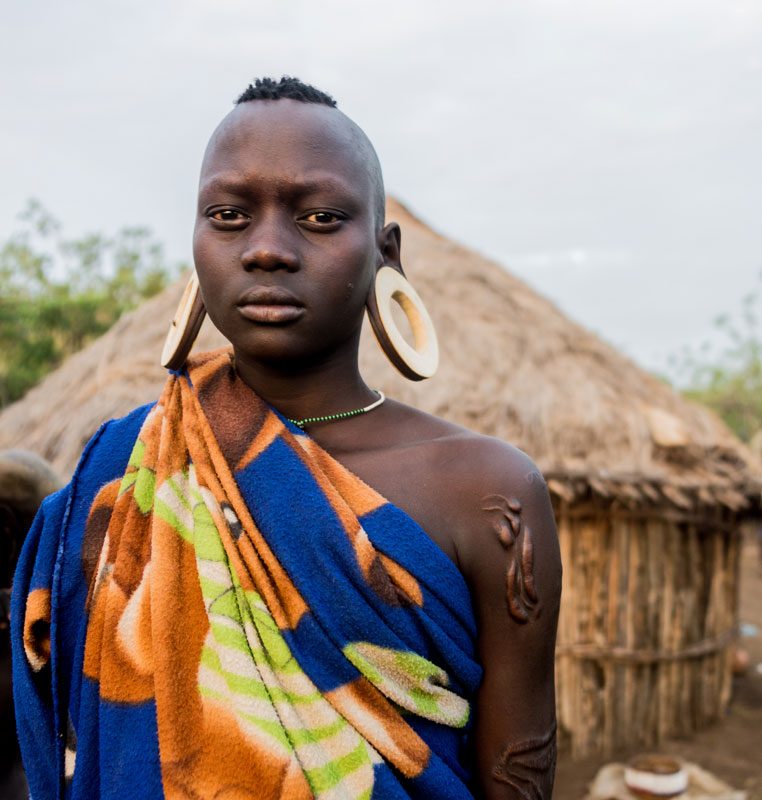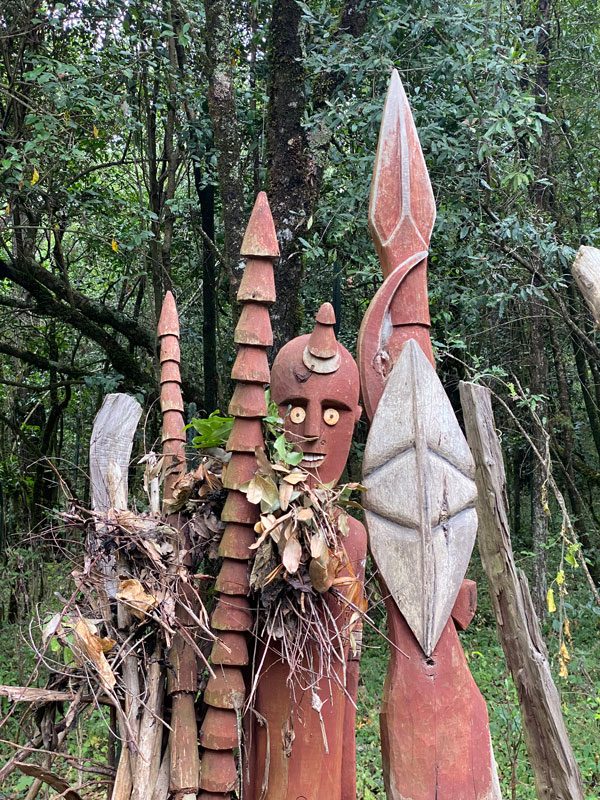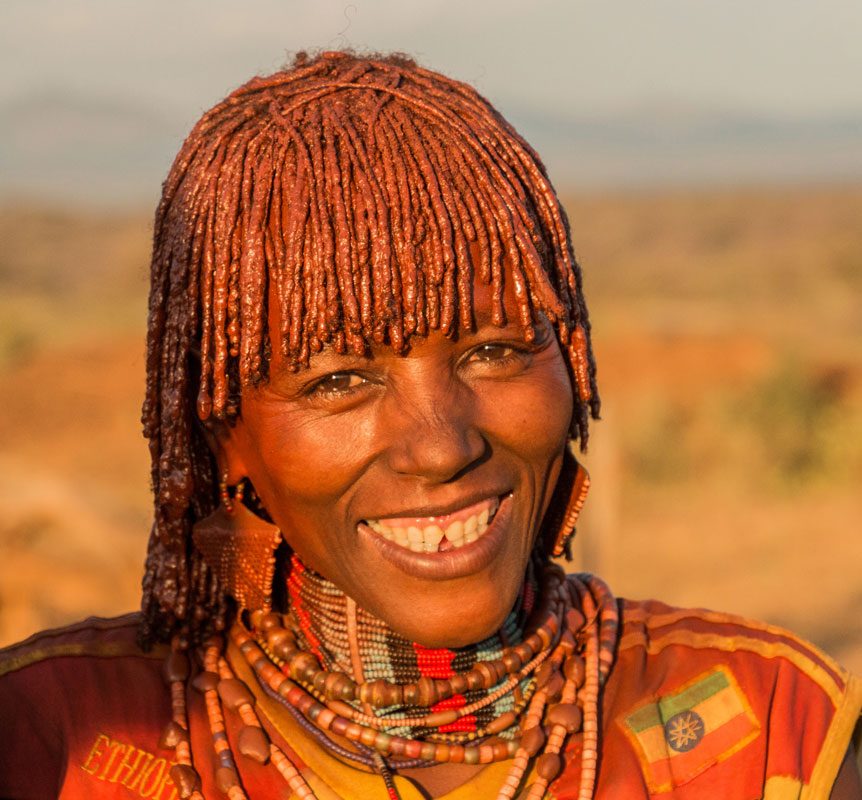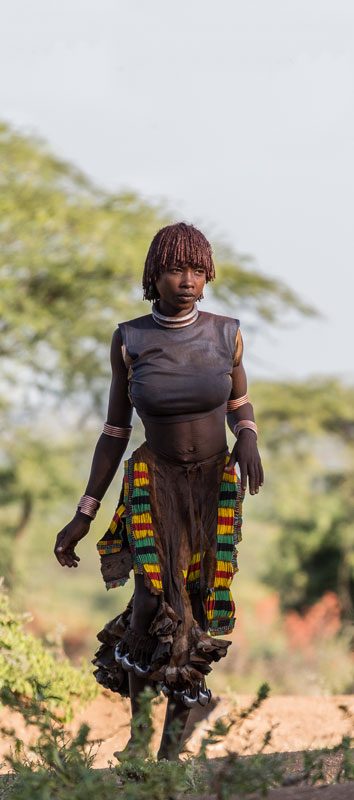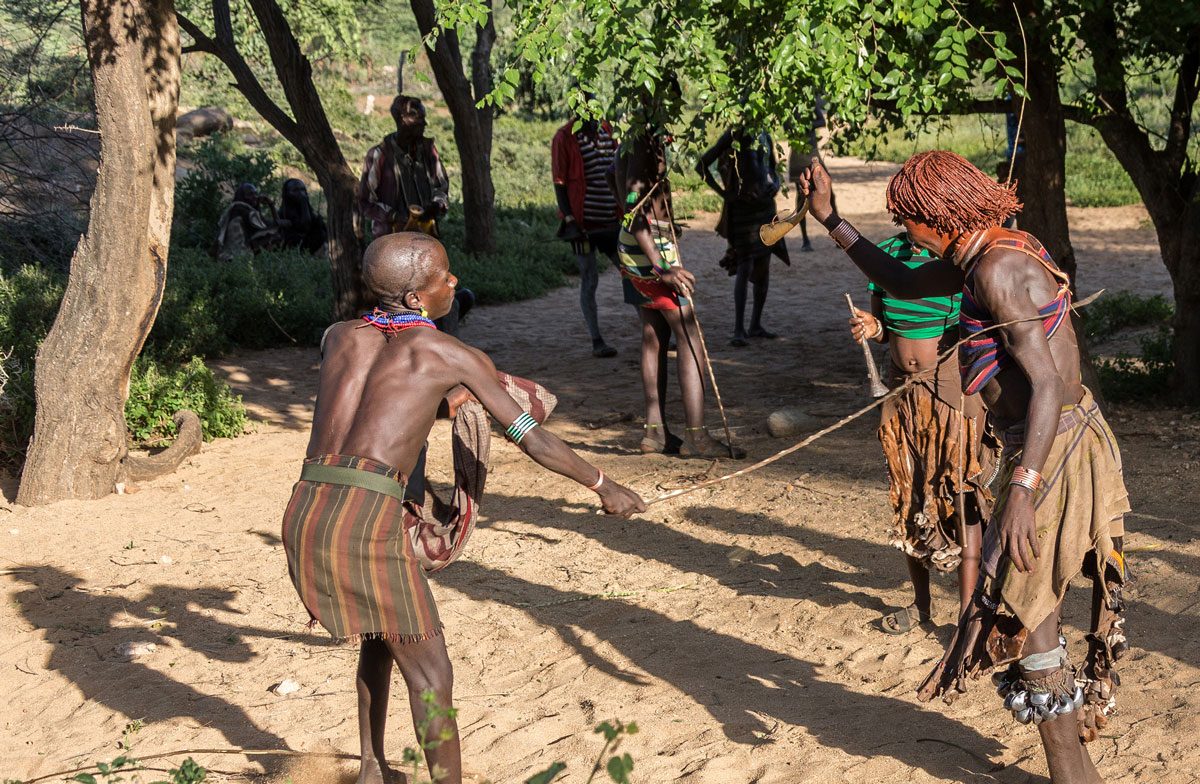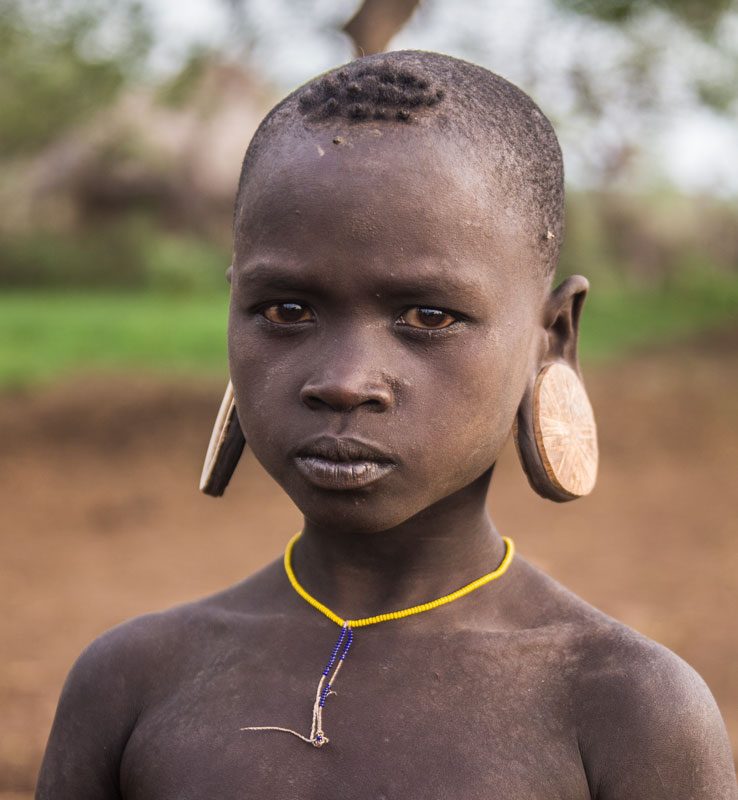"The cradle of Humanity", an incredible garden of cultures
In the Dorze Mountains and the Omo Valley you can find the highest concentration of diverse ethnic groups in Ethiopia. The resistance to the Italian colonization and the natural refuge that constitutes its geographic surroundings provided to the groups of the zone an isolation with respect to the western influence. These conditions have given rise to a small oasis with a rich cultural diversity.
Mursi ethnic group
First of all, we will cross the Mursi territory, famous for the lip plates that their women carry. It is a town dedicated mainly to grazing. They also carry out agricultural work: cultivation of sorghum and corn. Hunting is also an important activity for the Mursi, although it has been reduced as their territory has been declared a fauna reserve. We will spend the night in one of its villages to learn about the daily life of one of the most iconic tribes in Africa.

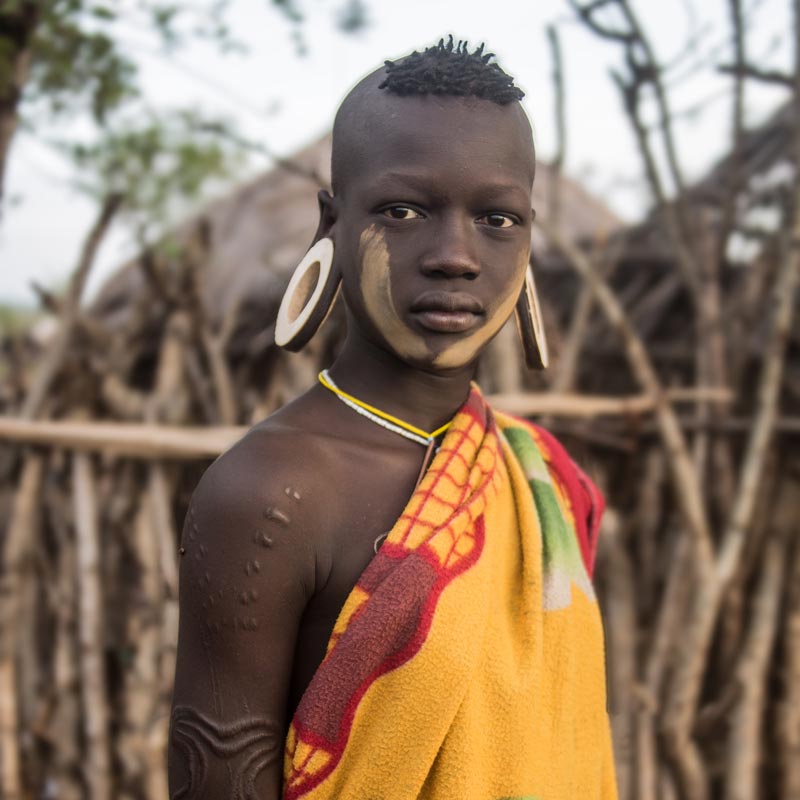
Hamer ethnic group
It is a tribe of ancestral customs, with its own language, religion and beliefs. The Hamer are tremendously hospitable, with unique rites among which we can highlight the "Ukuli Bula" or jump of the oxen, the delivery of the "Boko" and the "Evangadi" dance. It is absolutely recommendable to share days with them, accompany them to fetch water or firewood, get carried away by their children and share games, get lost in their colorful markets and take an interest in their day-to-day life. The Hamer are surely the archetypal ethnic group of the Omo Valley. The women wear a very characteristic hairstyle: decorated ocher braids and thick fringe. In addition, they wear leather skirts decorated with colored plastic beads and a dozen (or more) bracelets attached to their arms. For their part, men, like women, practice body scarification and wear simpler attire, except for the one they use for ceremonies.
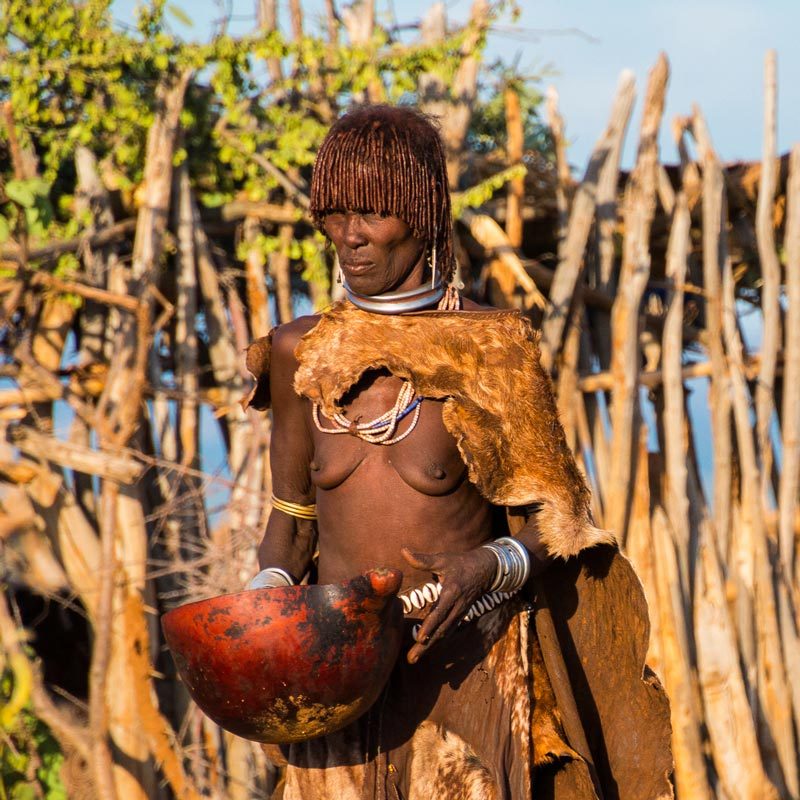
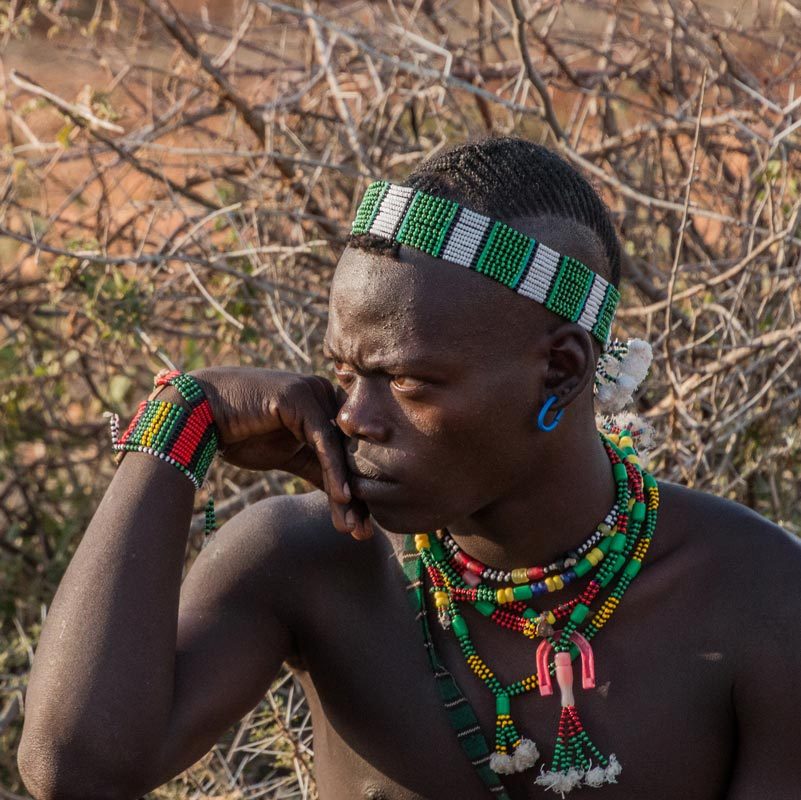
Dassanech ethnic group
In the Omorate region we will have the opportunity to meet the Dassanech, a Nilotic ethnic group, who build huts with metal sheets, USAID bags, and everything they find for the urban population of Omorate. We will visit different Dassanech villages to learn about their traditional way of life.
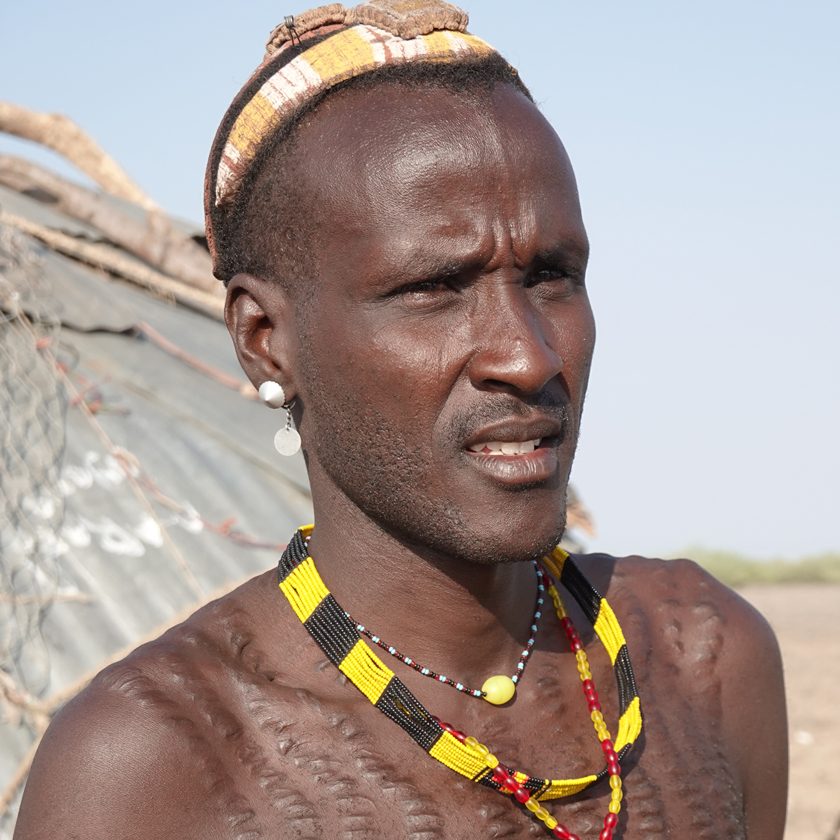

Konso ethnic group
It is a town dedicated to agriculture, with crops on characteristic terraces. They are also excellent beekeepers, whose honey is appreciated internationally. Their crafts are famous: they dominate carpentry, blacksmithing, pottery and weaving. We will share experiences in the Konso villages. The social structure of the Konso is based on belonging to one of the nine clans, "gada", into which Konso society is framed. Each "gada" has a religious authority who receives the title of "pokwalla". The rituals associated with the cult of the dead play a fundamental role in the Konso community. The most visible manifestation of ancestor worship are the "Waga", wooden statues that are erected in memory of the deceased with a certain relevance in Konso society. We will visit the royal palace and we will stay, in tents, in the vicinity of the king's house.
